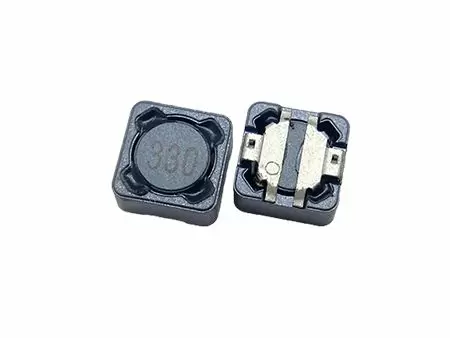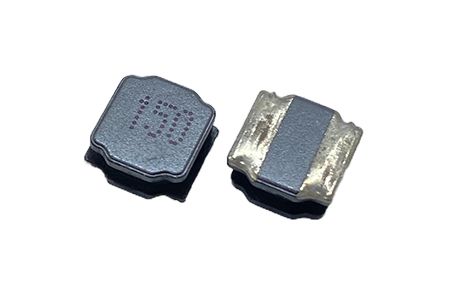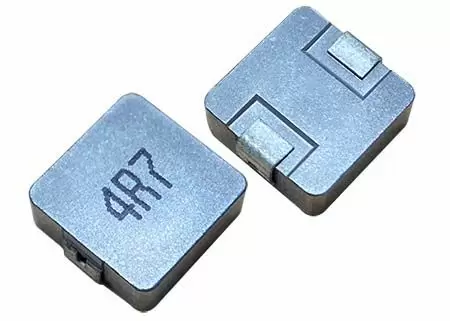What are the common types of surface mount inductors?
There are several types of inductors available on the market. How can they be distinguished from each other, and what factors should be considered when choosing the appropriate inductor for a specific application?
Multilayer Inductor
A multilayer inductor consists of a substrate structure and a coil. The substrate structure includes a layer of insulation material that covers a substrate and a coil formed on top of the insulation material. The main feature of multilayer inductors is their high magnetic density, which allows for a larger inductance value. In addition, their simple structure results in relatively low manufacturing costs.
Why Choose It?
Ultra-Compact Size: Ideal for tight PCB layouts in RF circuits and portable devices.
High-Frequency Performance: Often used in signal processing, RF, and other high-frequency applications.
Typical Trade-Offs:
Lower Current Ratings: Not typically suitable for high-current power stages.
Possible Higher Cost per Unit: Advanced manufacturing processes can increase price.
Unshielded Inductor
An unshielded coil refers to a coil that is not covered by metal shield material (such as a magnetic core or magnetic powder). They are typically used in electronic circuits for energy storage and electromagnetic interference suppression. Unshielded inductors have lower electromagnetic interference suppression capabilities, and may not be ideal for use in environments with strong electromagnetic interference. However, their manufacturing costs are lower, making them a viable option for some applications
Why Choose It?
Lowest Cost Option: Favored for budget-sensitive applications.
Wide Availability: A large variety of inductance values and current ratings.
Typical Trade-Offs:
Minimal EMI Containment: Not suitable for noise-critical designs.
Semi-Shielded Inductor
A semi-shielded inductor uses magnetic powder to cover the coil, providing shielding effects that fall between those of unshielded and shielded inductors. Semi-shielded coils are typically used in electronic circuits for energy storage and electromagnetic interference suppression. Compared to unshielded coils, semi-shielded coils have better electromagnetic interference suppression capabilities, but their manufacturing costs are slightly higher.
Why Choose It?
Moderate EMI Control: Balances EMI containment and cost.
Space Efficiency: Generally smaller footprint compared to fully shielded versions.
Typical Trade-Offs:
Less EMI Protection: Not as robust as fully shielded inductors.
Shielded Inductor
A shielded coil refers to a coil that is covered by metal shield material such as a magnetic core. Shielded coils are typically used in electronic circuits for energy storage and electromagnetic interference suppression. Compared to unshielded and semi-shielded coils, shielded coils have better electromagnetic interference suppression capabilities and can effectively prevent external electromagnetic interference from affecting the circuit. However, due to the use of shield material, the manufacturing costs of shielded coils are the highest among the four types.
Why Choose It?
Superior EMI Suppression: Ideal when interference must be minimized.
High Performance: Maintains stable inductance under higher currents.
Typical Trade-Offs:
Higher Cost & Size: Due to added shielding materials and construction.
Air Core Coil
Why Choose It?
No Core Losses: Suitable for high-frequency RF applications where core materials might distort the signal.
Excellent Q Factor: Offers lower losses at very high frequencies.
Typical Trade-Offs:
Bulky Construction: Can be physically larger for the same inductance.
Lower Inductance Values: Air core limits maximum achievable inductance compared to ferrite or alloy.
Chip Bead
Why Choose It?
Simple EMI Filtering: Primarily used to reduce high-frequency noise in data or power lines.
Easy to Implement: Designed to be placed in series with the line for effective noise suppression.
Typical Trade-Offs:
Limited Inductance Range: Not for major energy storage; best for noise cleanup.
Reduced Power Handling: Generally not for high-current paths.
- Related Products
10uH, 3.17A High Current SMD Shielded Fixed Inductor
SDS74H-100M-LF
SMD Shielded 4.5mm height Fixed Inductors with the highest current in this dimension, feature...
Details Add to List10uH, 3.1A Semi-Shielded SMD Power Inductors
SQH6045S-100M-LF
Semi-shielded SMT High Current Power Inductor - SQH6045S series with footprint 6.2x6.2mm and low profile...
Details Add to List10uH 5.5A High current inductor
SEP0603EN-100M-LF
Alloy Powder Molded Power Inductor: where cutting-edge inductive technology meets modern design....
Details Add to List



